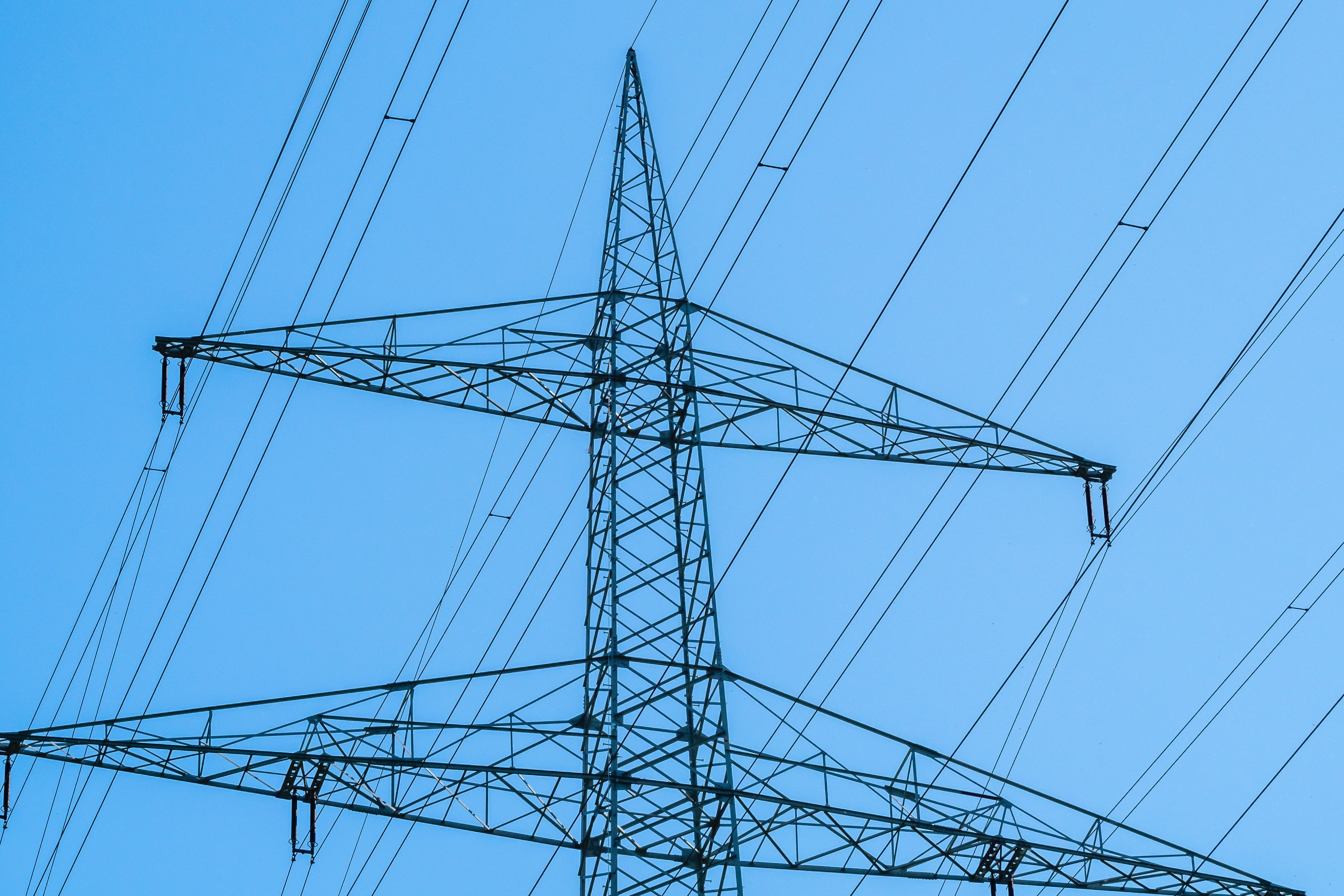
The Electric Vehicle Charging Problem
With any disruptive technology, there’s a tipping point there is a point in time when its path towards market dominance is a certainty
Now, electric vehicles are almost certainly a disruptive technology they’re almost, certainly a technology that will, with time, become dominant over their predecessor.
In this case, the predecessor is the internal combustion car that you, yourself almost certainly use. Chances are, though, when asked, you’d say that your next car will not be electric, and you’re right the average consumer, according to surveys, would not even consider purchasing an electric vehicle, demonstrating that the technology is not yet at that tipping point where it’s on a certain path towards market dominance.
But again, that path is almost certain. EVs are not there yet right now, they’re too expensive, too short range, and too slow to charge but they’re close.
In fact, research can quantify just how close they are. It’s been shown that the “tipping point price” for EVs, the price that will lead to mainstream adoption and eventual disruption, is $36,000. Taking a look at the prices of the base-models of three of the world’s best selling electric vehicles, they’re already roughly there, so we know that that’s not what’s holding mass-market consumers back.
What also matters is range
Consumers say they need 291 miles or 469 kilometers of it before the cars can go mass-market. Two of those best-selling EVs, the Tesla Model 3 and Chevy Volt EV, are not far from that, while the Nissan LEAF lags behind. Range and cost are closely linked, and you can essentially trade one off for the other, as the battery is the single largest cost of an EV.
That’s why the industry is so focused on innovating and scaling to lower the component cost of EV batteries, and it’s working. In 2013, the average price per kWh of an EV battery was $668, meaning the base-model Tesla Model 3’s 50 kWh battery would cost $22,400 2/3rds of what the vehicle sells for.

Nowadays, the average price per kWh is all the way down to $137
meaning that same battery pack would cost just $6,850, and this price per kWh is expected to lower to $100 by 2023. It’s getting more and more possible for manufacturers to sell an EV for the magic $36,000 price with the magic 291-mile range.
While EVs are not quite there yet, they’re really not far and will be there in the next few years. So, the range is not what’s significantly holding mass-market consumers back, and it won’t be at all within a few years.
What is, though, is charging
The research shows that consumers want to be able to charge their cars from empty to full in 31 minutes, and that’s the magic number for mass-market adoption. With this, current $36,000 EVs just aren’t yet there. The base model Chevy Volt EV can’t even fast-charge, it doesn’t have the technology for it, and even the upgraded, more expensive model that does allow for fast-charging can only get to 39% state of charge in 31 minutes.
The Nissan LEAF does a little better, attaining 62% state of charge in 31 minutes, while the base-model Tesla Model 3 does the best, with its ability to fill its battery to 83% in the most ideal conditions using the fastest models of Tesla Superchargers, but that would only give it 196 miles or 315 kilometers of range, again in the most ideal conditions.
In colder weather, both that charging time would be greater and that range would be less. So, it’s currently possible to get an EV with just about what the mass-market requires for cost and range, but reaching that charging time that’s just a lot tougher.
What this research can lead us to conclude is that the largest barrier right now to mass-market EV adoption is, in fact, the charging problem. The tipping-point just will not happen without widespread fast charging, but widespread fast charging is just difficult because of the very way our electric grid works.
You see, back in the 1880s, Thomas Edison, with his direct current electric system, battled it out with George Westinghouse, and his alternating current system. As the names suggest, direct current electricity flows consistently and unidirectionally, while alternating current oscillates in magnitude and rapidly changes direction.
The exact details of how each works isn’t that important in this context, but what is is to know that, for a variety of reasons, AC power won, it’s now the standard for power grids, but there are certain technologies that still need DC power. The most widespread example of that is batteries you cannot charge a battery using AC power. That’s why you don’t plug your smartphone directly into an outlet you plug it into a power brick that plugs into an outlet, and that power brick is an AC to DC inverter.’
A standard iPhone charging inverter outputs 5 watts of electricity, which is plenty enough to charge the phone’s 11 watt hour battery in a few hours. A base-model Tesla Model 3, meanwhile, has a 50 kilowatt hour battery 4,500 times larger. Therefore, it needs a much higher wattage power inverter to charge with any speed. It solves this in two ways. Onboard that Model 3, there’s a 7.7 kW inverter that can take AC power from common sources, like a standard wall outlet, and convert it into DC power to charge the battery. At its max rate, this can charge the car fully in under ten hours, and has the advantage of allowing consumers to charge using regular wall plugs or by installing relatively inexpensive chargers on existing domestic AC electric circuits.
The disadvantage, though, is that, while 7.7 kW is plenty fast enough for regular, overnight, at-home charging, it’s not fast enough to compete with the convenience of filling up an internal combustion car at the gas station. It’s not fast enough if you’re on a long-distance trip and need to be able to gain hundreds of miles of range in a matter of minutes.
So, if you need more electricity faster, you need a higher wattage inverter. To be able to take a Tesla Model 3 from almost empty to almost full in thirty minutes, you want between 120 and 250 kW. The problem, though, is that a 250 kW inverter costs, at least in this case, $57,600 and is about the size of a very large fridge it’s not exactly practical to have this as an internal component of the car.
So, for faster charging, one needs to offboard the inversion process
That’s exactly what a DC-fast charger does it supplies a huge quantity of DC power to the car, which bypasses the onboard inverter and charges the battery directly. Between the inverter, the charger, and all the other equipment needed for a fast-charging station, the cost and size is not insignificant.
One of the more popular models, the Chargepoint Express 250, which can charge a single car at a somewhat slow 62.5 kW, sells for $40,800, and that’s before installation. Meanwhile, while it’s tough to get an exact figure, industry experts estimate it costs Tesla about $250,000 to build an average Supercharging station with 6–8 stalls delivering 120 to 150 kW each, while its closest equivalent, the stations by Volkswagen’s Electrify America, are estimated to cost $350,000. But here’s something counterintuitive: using a 250 kW charger versus a 150 kW one doesn’t really impact how fast you charge.
Batteries charge slower the more full they are, so the first 20% will pass far faster than the last 20%. In the context of EV charging, this means that quite quickly into the charge, the speed is impacted not by how much power the station is putting out, but by how much electricity the battery can accept.
So, it’s actually faster to charge to 50%, drive until empty, charge to 50%, and drive until empty again than charging to 100% and driving to empty. A Tesla Model 3 can go from zero to 50% charge in 15 minutes on a 250 kW charger, and 17 minutes on a 150 kW charger giving it enough range to drive at least 100 miles or 160 kilometers while charging from 50% to 90% would take an additional 27 minutes in both cases.
So, combining two charges from empty to 50%, in two stops, you could effectively reach the tipping point speed of 100% charge in 31 minutes with existing 250 kW chargers. Therefore, what the industry needs is not faster chargers, but more chargers, which is hugely difficult given the enormous cost of fast chargers.
The average American lives four minutes away from a gas station

Meanwhile, the same average American lives 31 minutes away from their nearest Tesla Supercharger. Currently, there are 976 supercharging stations in the US each of which have anywhere between two and 56 individual chargers. In order to match the four-minute average of gas stations, Tesla would need to build an additional 31,251 Supercharging stations.
At their $250,000 per station cost, that would cost the company some $7.8 billion, or roughly ten times their total annual profits from 2020. In addition, only some 750,000 Teslas ever have been sold in the US, meaning, to have fast charging stations as accessible as gas stations, the company would need to install a $250,000 Supercharging station for every 23 cars it had on the road. Quite obviously, that’s not feasible, as the stations would never break-even with such infrequent use, and that’s the exact problem.
You need the infrastructure to sell the cars but you can’t build the infrastructure until you sell the cars. It is the classic chicken and the egg problem. There might, however, be a solution. According to federal government data, there are some 3,845 non-Tesla DC fast-chargers in the US the vast majority of which could charge a Model 3 within an hour… assuming it could connect.
Just as there was a format war in the 1880s between DC and AC power, there is now a war of charging standards. Take the example of Salina, Kansas a small city off of Interstate 70 which most people only visit to refuel or, in this case, recharge. This Supercharger uses Tesla’s proprietary plug, this Electrify America station uses CCS and CHAdeMO plugs, and this hotel’s charger uses a J-1772 plug. There are four different plug types in one small city.
Now, a Tesla could use the Tesla charger and the J-1772 charger with an included adapter, but it could only use the CHAdeMO charger with a speed-limited $540 adapter, and it couldn’t use the CCS charger at all as there’s no adapter for that plug-type. Meanwhile, a Chevy Volt EV wouldn’t be able to use the Tesla or CHAdeMO chargers at all as there are no adapters available for either to its CCS plug.
This means that, to accommodate every vehicle type, DC fast chargers need to have three different plug types, which, overwhelmingly, they just don’t. Especially along Interstate highways, there are the Tesla stations, and there are combo CHAdeMO and CCS stations.

Just like Edison and Westinghouse delayed more widespread adoption of electric power by competing against each other in the same areas with their different, incompatible AC and DC standards, different stakeholders in the electric vehicle market are competing against each other in the US to create redundant, largely incompatible networks. But that’s not happening everywhere.
You see, in Europe, CCS is the standard. The European Union has a directive which means that many member states, by law, require that public DC fast chargers include a CCS plug. Therefore, in the EU and neighboring countries like the UK, Norway, and Switzerland, CCS is now the de facto or de jure charging standard.
That forced Tesla’s hand to the point that in 2018, it retrofitted all its existing Superchargers with CCS plugs, switched its Model 3’s to CCS, and released an adapter allowing its other models to use CCS chargers. All told, this means that pretty much any car in Europe can use pretty much any DC fast charger.
That, combined with Europe’s higher population density, has helped ensure that the density and coverage of DC fast chargers is much greater than in the US, despite the fact that EV ownership per capita is actually higher in the US than Europe as a whole although certain European countries far eclipse the US’ rate.

Europe is almost identical in size to the US, it has a very similar number of electric cars overall, but it has double the number of DC-fast charging stations. In Germany, the furthest you can seemingly get from a DC-fast charger is here, in Winterberg. From this small ski-town, the nearest fast charger is about 30 miles or 50 kilometers away in Marburg. Meanwhile, in the US, if you wanted to drive directly from Dallas to Denver, two major cities, using a base-model Tesla Model 3, you just couldn’t.
There’s a 226 mile or 363-kilometer stretch with no DC fast charger between Amarillo, Texas and Trinidad, Colorado which, given the elevation gain, the car would not make. While Tesla is plugging this gap soon with a new charger in Clayton, New Mexico, that won’t solve the problem for every single other EV on the market, since the charging systems are not compatible.
Simply put, mass market consumers are not going to buy cars that can’t drive from Dallas to Denver. What Europe has that the US does not is coordinated government plans. Germany’s federal government, for example, builds its own charging stations, in addition to offering strong incentives for private companies to do so as well.
Meanwhile, the federal government in the US has done very little to incentivize fast-charger construction and certainly does not have a network of its own. Certain states, such as Oklahoma or Colorado, do have strong, coordinated government programs to build fast-charging infrastructure, meaning even shorter-range EVs can drive essentially anywhere in each state without encountering a fast-charger gap, but the problem is that EV drivers from Colorado or Oklahoma will eventually want to drive through Kansas, or Nebraska, or Wyoming, or other states that do not have a coordinated plan.
The US Federal Government clearly wants people to buy EVs, because it offers hefty tax credits to those who do so, but people are not going to buy EVs without the charging infrastructure to support it. EVs are comparable in cost to internal combustion cars, their range is about what consumers demand, but what’s lagging behind is that charging infrastructure.

This isn’t even an exclusively American problem. In Australia, one can’t drive from Perth to Sydney the country’s forth and first most populous cities in an EV, due to a massive charging gap, while in Russia, despite similar incentives for EV purchases, there are a total of 24 DC-fast chargers in the entire country.
Of course some will always debate whether governments should be incentivizing electric vehicles at all, but regardless of that, they are it’s tough to find a developed country that does not have some tax or other monetary incentive for EV ownership.
The point is that they’re incentivizing the wrong way. EVs are very, very close to reaching the tipping-point criteria for everything but charging. Cost is not standing in the way, technology is not standing in the way, infrastructure is, so governments are putting the cart before the horse.
Individual companies cannot reach the required scale, and even if they did, as the format war in the US proves, it probably wouldn’t be the kind of scale that the mass-market consumer demands. Individual car companies can deal with making individual electric vehicles attractive to consumers, the government doesn’t need to worry about that, but the infrastructure that’s the government’s job.
Governments run or regulate roads, and bridges, and tunnels, and sidewalks, railways, airports, electric grids, dams, sewers, water supply networks, and even fuel supply systems, because they are infrastructure, and infrastructure is essential, so the only question is: why not charging?














